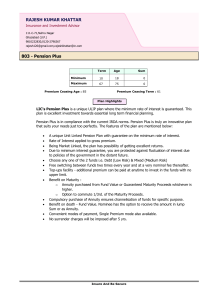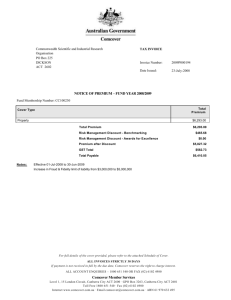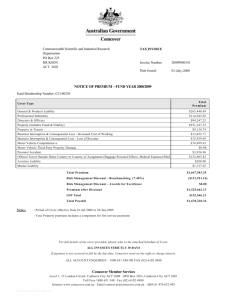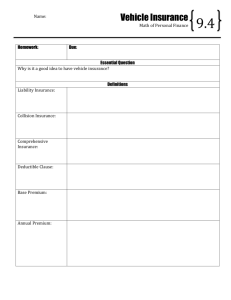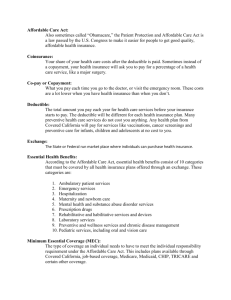Seller + Writer è Short call option
advertisement
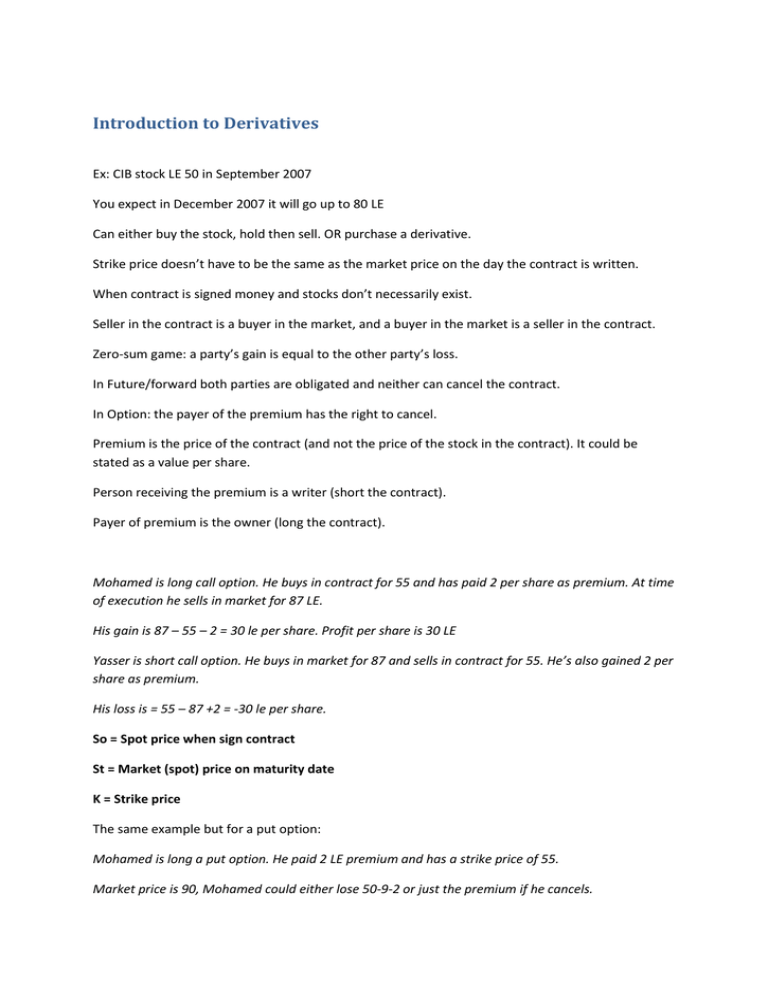
Introduction to Derivatives Ex: CIB stock LE 50 in September 2007 You expect in December 2007 it will go up to 80 LE Can either buy the stock, hold then sell. OR purchase a derivative. Strike price doesn’t have to be the same as the market price on the day the contract is written. When contract is signed money and stocks don’t necessarily exist. Seller in the contract is a buyer in the market, and a buyer in the market is a seller in the contract. Zero-sum game: a party’s gain is equal to the other party’s loss. In Future/forward both parties are obligated and neither can cancel the contract. In Option: the payer of the premium has the right to cancel. Premium is the price of the contract (and not the price of the stock in the contract). It could be stated as a value per share. Person receiving the premium is a writer (short the contract). Payer of premium is the owner (long the contract). Mohamed is long call option. He buys in contract for 55 and has paid 2 per share as premium. At time of execution he sells in market for 87 LE. His gain is 87 – 55 – 2 = 30 le per share. Profit per share is 30 LE Yasser is short call option. He buys in market for 87 and sells in contract for 55. He’s also gained 2 per share as premium. His loss is = 55 – 87 +2 = -30 le per share. So = Spot price when sign contract St = Market (spot) price on maturity date K = Strike price The same example but for a put option: Mohamed is long a put option. He paid 2 LE premium and has a strike price of 55. Market price is 90, Mohamed could either lose 50-9-2 or just the premium if he cancels. Yasser is short a put option. His gain is the premium. When K=St the owner is indifferent between executing and cancelling. For the owner of a put option if: K < St Out of the money K = St At the money K > St In the money Here we ignore the premium effect, because we are discussing pay out and not profit, premium is paid in all cases. When discussing profit we account from the premium. Buyer + Owner Long call option Seller + Writer Short call option Seller + Owner Long put option Buyer + Writer Short put option Call Long Short Put Right to buy Right to sell Pay premium Pay premium Can Cancel Can Cancel Obligation to sell Obligation to buy Receive premium Receive premium Long future/forward Buyer Short future/forward Seller Long stock Buy this stock in spot market Short stock Short-sell this stock Short selling: Ask him to sell stocks I do not own. They are borrowed from the broker who in turn takes them from the pool of stocks of depositors in the stock depository. Why derivatives? Premium is determined through mathematical models and not haphazardly. As K of a call option decreases, attractiveness of option increases, and the premium increases. Attractiveness is linked to the relationship between strike price and spot market price. In put option, as K increases, more attractive, premium increases. Ex: Assume So = 50 Initial investment = LE 50,000 If expecting price to go down will own a put option. K = 50 and premium = 5 LE per share. One year maturity. American option: can exercise at any time before maturity. European option: can only exercise it on its maturity date. When sell contract to another party, I get premium and he becomes the owner while the writer remains constant. It can keep being sold for premium until data of maturity. Premium is difference between St and K. Selling a call option is always better than exercising. In a put option you are indifferent between selling it and exercising it. Option is insurance against changes in stock prices. Hence sell at more than S-K to account for time value of money. Owner can’t lose more than premium; writer can’t profit more than premium. Value of Call contract is two parts: 1) Intrinsic value = IV = S-k 2) Time value (insurance, the possibility that circumstances will improve) Intrinsic value can never be negative; it’s maximum of zero and S-K Futures: Ex: Long future CIB at F(strike price) = 50 for 1000 shares. Maturity on September 2008 In December 2007 price went up to LE 80. Expecting price to go down to 30 LE in September 2008. Instead of just waiting short an opposite future contract that ends on same maturity. In options you decide K and spot and model gives your premium. In futures model gives you the K (F in this case) when you enter spot. F = So ert R is the continuous compounding rate. Proxies for with the risk free rate. F = 86 In Sept 2008 clearing house sees my account and does cash settlement to my account. This is what is known as closing out my position. If I’m cutting losses, can I close my future position with an option contract? 99% of future contracts are closed before maturity date. Final Exam



